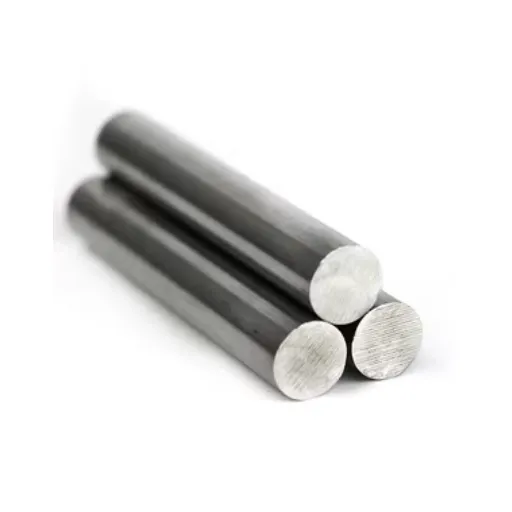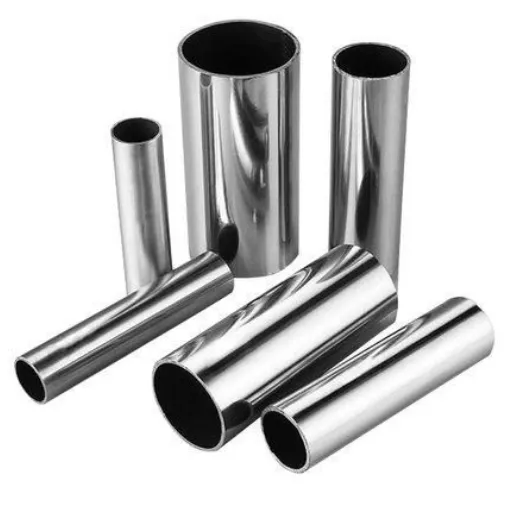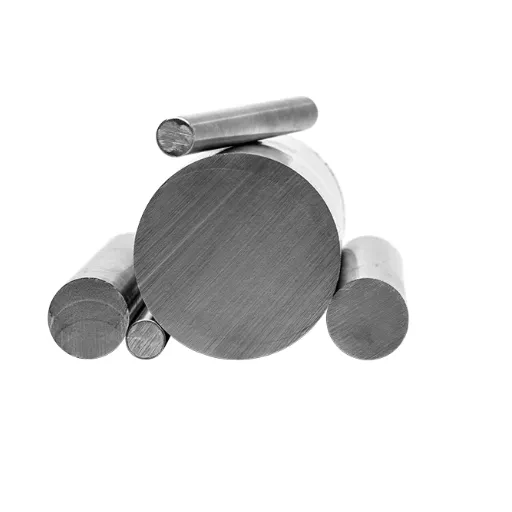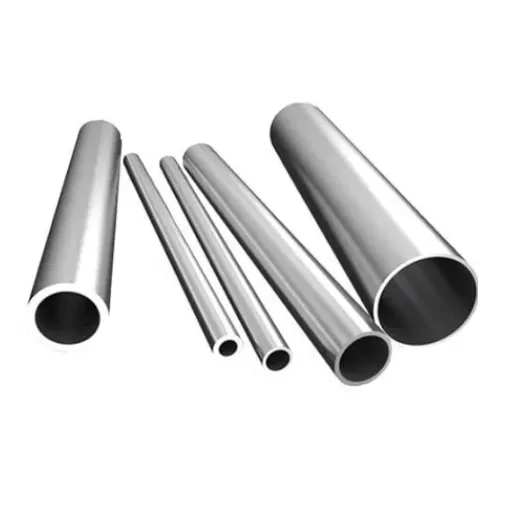Angle iron is L-shaped structural steel that is vital in construction and manufacturing applications. Its unique cross-section extrudes enormous strength and versatility in a large array of applications, from framing and supports to bridges and machinery. This is an authoritative guide explaining the importance, properties, and actual uses of angle iron. If you are a professional requiring exact and specialized knowledge about the angle iron or are an inquisitive learner looking for that versatile material’s attributes, types, and benefits, this article presents a deep, detailed insight to ground your project decision theories. Stay put to find out how angle iron is used to enhance the structural integrity and efficiency of endless designs and systems.
Introduction to Angle Iron
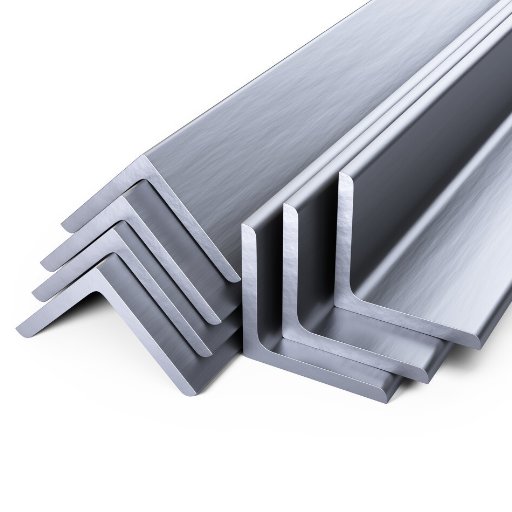
Angle iron is a term referring to a structural steel line having an L-shaped cross-section, which renders it highly versatile and strong against forces encountered in construction and engineering applications. The hard-working angle iron, known to carry heavy loads without altering its shape, sees a variety of applications from casing to support structures and reinforcing frameworks. Being manufactured from quality steel, it is available in many sizes and gauges, lending itself to all sorts of applications, including construction, manufacturing, and even transportation. The formation allows easy cutting, welding, and assembling for all project applications requiring structural stability and wear.
What is Angle Iron?
Angle iron, L-section, or angle bar is an extremely versatile structural member. Angel iron is fabricated from steel with a cross-section of the letter L with two legs of either equal or unequal widths. The angle iron is widely preferred for structural uses in load-bearing frameworks due to strength-to-weight considerations. Fabricated through hot-rolling, cold-forming, or cold-rolling processes from mostly carbon steel or mild steel, variations of angle iron are supplied with surface finishes such as stainless steel or galvanized coating to increase the resistance of the steel to corrosion-especially for outdoor applications. Being useful in every aspect of life, it goes into the construction of buildings, bridges, shelves, and brackets, and vehicle chassis. The precision and adaptability of its dimensions and materials allow it to be cast to fulfill several engineering requirements, ensuring performance through various environmental conditions in the long run.
Types of Angle Iron: Equal vs. Unequal
|
Parameter |
Equal Angle Iron |
Unequal Angle Iron |
|---|---|---|
|
Definition |
Both legs are of equal length |
Legs have differing lengths |
|
Common Applications |
Ideal for symmetrical structures |
Suitable for load distribution |
|
Structural Balance |
Balanced strength and appearance |
Uneven weight distribution |
|
Weight Distribution |
Uniform across the profile |
Concentrated on the longer side |
|
Stability |
Offers symmetrical stability |
Provides versatile design options |
|
Manufacturing Flexibility |
Limited to equal leg dimensions |
Customizable for specific needs |
|
Cost Efficiency |
Often lower-cost due to simplicity |
Slightly costlier due to complexity |
|
Popular Usage |
General construction and framing |
Bridges, heavy-duty components |
Key Properties and Characteristics of Steel Angles
- Material Strength
- Generally, material for these angle steels comes in varieties of carbon steel, stainless steel, galvanized steel, etc., providing high stresses with tensile strengths ranging from 400 MPa to 600 MPa, depending on the grade.
- Corrosion resistivity varies based on surface treatment (galvanizing, coating, etc.) and on the nature of the materials (etc., stainless steel having the best resistance).
- Cross-Section Design
- Angles are provided in two main profiles:
- Equal-Legged Angles: Both legs are of the same length so the load is distributed uniformly.
- Unequal-Legged Angles: One leg is shorter, used in cases where the load distribution needs to be specialized.
- Dimensions and Tolerances
- Common leg length ranges from 20 mm to 200 mm or so.
- Thickness usually varies between 3mm and 25mm depending on the application. Standard tolerances follow as per ASTM A6/ A6M or EN 10056 specifications, depending on the regional standards.
- Load-Bearing Capability
- The cross-sectional geometry gives the angle the capability of withstanding compressive forces and at the same time being used as a framework for structural support.
- Unequal-leg angles offer better adaptability for eccentric load applications.
- Fabrication Versatility
- Steel angles are usually cut, drilled, welded, or bolted during the fabrication processes.
- This flexibility gives them a high value in custom-built and industrial applications alike, from heavy machinery support through composite construction.
- Eco-Friendliness
- Being able to recycle at the end of their life, steel angles positively impact the sustainability of manufacturing.
- Their durability and the potential for repeated use are the reasons behind their being regarded in sustainable construction practices.
- Thermal and Electrical Conductivity
- It is not a primary factor in consideration for structural purposes, but steel exhibits moderate conductivity, whereby the galvanized option is therefore preferred for better durability within varying atmospheric conditions.
Material Types and Their Benefits

- Carbon Steel
- It is the most common material because of the strength it offers, coupled with the low price.
- Can be subjected to a majority of construction and manufacturing applications.
- Stainless Steel
- Offers superior corrosion resistance afforded by chromium contents.
- Suitable under moist conditions or exposure to chemicals.
- Galvanized Steel
- The zinc coating prevents corrosion, hence increasing the life of the steel.
- In outdoor structures and industrial applications, steel galvanized is commonly used.
- Alloy Steel
- Enhanced with elements such as nickel, chromium, or vanadium to improve specific properties like strength, toughness, or heat resistance.
- They find uses commonly in high-level applications, such as the automobile and aerospace industries.
Carbon Steel Angle: Strength and Durability
Carbon steel angle iron is famous for its high strength-to-weight ratio, and therefore, it forms a basis for structural and day-to-day industrial projects. High carbon content makes this material stronger, harder, and able to withstand higher load applications with cost-efficiency in regard to other materials. This material is in high demand in the building of structures, bridges, and heavy machinery, where stability comes first, and resistance comes after. Modern engineering systems, however, have enhanced manufacturing to the point where the user can accurately specify all dimensions and finishes, which further increases the versatility of the material. According to studies in the industry, carbon steel angles find more favor in the construction of frameworks, in reinforcement applications, and shelving systems that withstand very high stress for long periods without deforming or failing.
Other Material Options for Angle Iron
|
Material Type |
Key Points |
|---|---|
|
Stainless Steel |
Corrosion-resistant, durable, high tensile strength |
|
Aluminum |
Lightweight, corrosion-resistant, good for non-structural applications |
|
Galvanized Steel |
Zinc-coated for enhanced corrosion resistance |
|
Brass |
Strong, durable, wear-resistant, and decorative |
|
Titanium |
Lightweight, corrosion-resistant, and high strength-to-weight ratio |
|
Reinforced Composites |
High strength, lightweight, customizable properties |
|
Copper |
High thermal/electrical conductivity, corrosion-resistant |
Plating Materials: Enhancing Longevity
Plating materials work to enhance substrate durability, corrosion resistance, and surface performance of an object going through use. Usual plating options include chrome, nickel, zinc, gold, and silver, depending on what the particular need is in the operation, the environment, etc. Examples include chromium, which is widely used in the automotive and industrial sectors for great hardness and resistance to abrasion. Then nickel plating provides corrosion protection and a smooth decorative finish, and is widely used for consumer products and electrical components. Zinc plating is commonly applied to steel to provide good corrosion resistance, especially in conditions where moisture exposure is expected.
Applications of Angle Iron
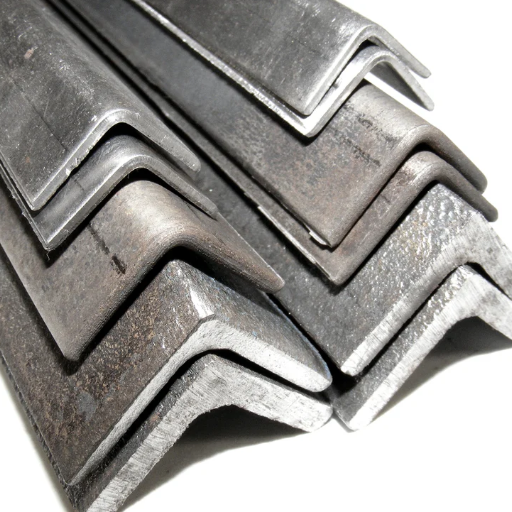
- Construction and Structural Frameworks
Angle iron is used predominantly in the construction of buildings, bridges, and other structural frameworks. Hence support beams, trusses, and the reinforcements at joints are created with the highest load-bearing capacity. For example, it is common on roof structures where loads of great value are applied and where good structural integrity has to be present. Research has shown that galvanized steel angle irons with the respective thicknesses and dimensions can withstand in excess of 5,000 pounds per linear foot.
- Industrial Machinery and Equipment
Angle iron is used for building frames and parts of heavy industrial machinery. This material offers excellent viability under high-impact environments, providing stability and durability to equipment such as conveyors and material handling devices.
- Storage and Shelving Units
Angle iron is used extensively in warehouse racking and other custom shelving systems. These shelves can support heavy loads in the thousands of pounds in distributed loads when designed properly, which makes these shelves and angle iron an important part of industrial and commercial storage solutions.
- Automotive and Transportation
Angle iron finds use in chassis and trailers for different motor vehicles and even for railroad works. Its load-to-weight ratio lets manufacturers create a lighter mode of transport, which raises fuel efficiency while not compromising safety criteria.
- Agricultural Implements
Angle irons find applications in agri-machinery and implements such as ploughs and harrows, including framing for greenhouses. Corrosion-resistant versions of angle irons, when either coated or galvanized, survive well in outdoor environments and in damp situations for a long time.
- DIY and Residential Use
Owing to its simplicity and cheapness, angle iron finds great patronage among DIYers and for residential purposes alike. It is extensively used in making frames, fences, gates, and furniture with a nice balance of usefulness and appearance. Smaller gauges of angle iron may be used in home improvements for decorative yet functional applications.
- Energy Sector and Infrastructure
Construction Uses of Steel Angles
Due to their strength and very versatile nature, steel angles form a prime in the modern construction industry. They are used in frameworks, providing support under bridges, warehouses, and buildings. L-shaped steel angles, for example, are used for reinforcing concrete beams and columns against loads and grout settlements while increasing the tensile strength and overall stability of these structures. Their ability to resist tensile and compressive stresses renders them suitable for use in trusses, bracing, and shelving systems for relatively large construction matters as well as for smaller architectural applications. Furthermore, with advancements in manufacturing, the supply of galvanized or stainless steel options has increased to offer greater durability and corrosion resistance in aggressive environmental conditions. Owing to these features, steel angles have become one of the principal elements in building structures designed for longevity and strength.
Manufacturing Applications
- Metal Fabrication
Steel angles can be used in machinery framing, industrial containers, and assembly platforms as structural supports. Being able to carry very heavy loads without deforming makes steel angles vital in these applications.
- Automotive Industry
Steel angles are used to make chassis members, mounting brackets, and support structures. They keep the vehicle stable while adding the least amount of weight to it.
- Machinery and Equipment
Steel angles are used in conveyor systems, agricultural machinery, and equipment for handling heavy material under strenuous load, repeated stress to prevent deformation for long operational use.
- Warehouse Storage and Racking Systems
Racking and storage systems found in warehouses and industrial plants are primarily constituted by steel angles for the purposes of load bearing during the assembly of vertical and horizontal supports because of their tensile strength.
- HVAC Systems
Steel angles serve as mounting and supporting elements for HVAC units, ducts, and ventilation framework,s as they can take a wide range of weights and environmental stresses with little maintenance required.
- Electrical and Communications Infrastructure
Choosing the Right Angle Iron
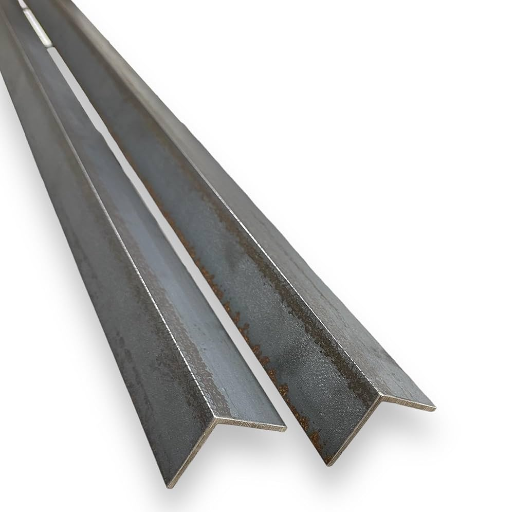
The type of angle iron to use depends on many pertinent factors that must be taken into consideration to ensure the angle iron complies with structural and functional demands:
- Material Composition
Type of material-whether carbon steel, stainless steel, or aluminum-based-must be considered concerning strength required, corrosion resistance, and environmental conditions.
- Load-Bearing Requirements
The load the angle iron will support, being static or dynamic forces in need of normal force, tromping force, or centrifugal force.
- Dimensions and Specifications
Dimensions for leg length or thickness must satisfy criteria whereby the angle iron can properly fit into the design without losing functionality.
- Coatings and Finishes
In outdoor setups or places laden with moisture, priority must be given to coatings for the angle iron to increase its lifespan-galvanized and powder coatings may be options.
- Compliance with Standards
Confirm that the angle iron complies with the industrial specification (has no less than ASTM and ANSI) to ensure safety, trustworthiness, and compatibility with other side components.
Loading Recommendations for Different Projects
While establishing norms for loading in different projects, it is equally essential to consider the type of load as well as structural requirements for the application itself. Loads are, in general, classified as static or dynamic. Static, such as a piece of machinery, will have a constant pressure or force that it applies with time, while the dynamic one, such as vehicles or mechanical appliances, introduces variable or impact forces that require due consideration during the designing stage.
The lightest residential application typically involves supporting shelves or small overhead structures for which steel with a general design yield strength of approximately 36,000 psi is sufficient. High-grade structural steel, such as A992, demands industrial and commercial works where heavy or unpredictable loads may apply, including loading docks or equipment supports, with the capability of additional tensile strength and tenacity under stress.
Structures in corrosive environments, such as outdoors or marine applications, need to consider additional safety factors so that the material does not degrade. Choosing finishes appropriate for angle iron finishes, such as galvanized or stainless steel, ensures that the materials can stand both in anticipated loading and environmental stresses. Doing accurate, precise load calculations about load considerations, the span length of the plane, and deflection tolerances would result in increased safety and improved performance.
Understanding Product Width and Slot Options
Choosing the product width and slot options is crucial in guaranteeing compatibility, functionality, and efficiency in the design. The width of the product is typically associated with structural requirements for the application, such as carrying capacity, dimensional restrictions, and space design. Wide ones tend to provide more stability and durability, whereas narrower options should be used in areas with tight space restrictions or little load requirements.
Conversely, slot options define mountings, connections, and adaptability within the system. The standardized slot sizes, often preferred for their versatility to fit many kinds of accessories and components, might require custom slot configurations for specialized uses. The slot design and its dimensions influence ease of assembly, modularity, and system integration.
Current Trends in Angle Iron Usage

The applications of angle irons continue to evolve with advancements in materials science and changing industry requirements. One major shift is that lightweight and exceedingly high-strength alloys such as advanced high-strength steel (AHSS) are being increasingly preferred to ensure structural gains in conjunction with durability. In another domain, pre-fabricated and modular construction methods involving angle iron components that are pre-cut and pre-drilled have become standard, speeding up the assembly operation. Meanwhile, sustainability goals have driven the use of recycled materials in the manufacture of angle irons, which aligns with the worldwide effort to reduce carbon footprints and promote green building practices. Hence, these factors collectively influence the modern uses and manufacture of angle iron.
Innovations in Production Types
Recent advances in manufacturing methods have significantly influenced the types of production available for angle iron. On the one hand, a significant change has been witnessed with the merging of laser-cutting technology, which gives an edge in expediting precision and efficiency in intricately designed projects of custom dimensions. This method also minimizes waste and increases structural integrity by polishing edges and allowing the tightest tolerance. Automated welding and robotic assembly have further reduced time for production, thereby maintaining production consistency on a large scale.
The other one would be transforming high-strength low-alloy (HSLA) steels, which are almost as strong as carbon steel but lighter, to be realized in the manufacture of angle iron that now fulfills various requirements of present-day engineering projects like high-rise buildings, bridges, and renewable energy infrastructure.
Sustainability is further on the brink of evolution and era-long acceptance. Recycled steel, sustained by energy-efficient production methods, has put angle-iron producers at the forefront of sustainable industrial practice. Apart from enhancing the fabs’ own capability, these improvements resonate with the environmental consciousness growing within the industry. These are consolidating to speak about a new generation of precision tooling, efficiency, and sustainability in angle iron production.
Market Pricing and Availability
Reference Sources
1. Experimental Study on Bearing Capacity of Corroded Angle Steel Members
- Key Findings: Corrosion significantly reduces the axial compression bearing capacity of angle steel members. The study identified that local corrosion often occurs in areas with weak anti-corrosion capabilities, such as tower feet and connections. Uniform corrosion, common in coastal or industrial areas, leads to a more uniform degradation.
2. Buckling Resistance of Stainless Steel Angle Columns
- Key Findings: The study revealed that the buckling resistance of stainless steel angle columns is underestimated when using design curves meant for carbon steel. It proposed adjustments to Eurocode 3 for more accurate predictions.
3. Experimental Study and Bearing Capacity Analysis of Retrofitted Built-Up Steel Angle Members
- Key Findings: A non-destructive reinforcement method for steel angles increased their bearing capacity by 39% to 174%. The method was particularly effective for slender members.
Frequently Asked Questions (FAQs)
Q: What is the standard length of angle iron products?
A: The standard length of angle iron products varies, but it typically ranges from 10 to 20 feet. When ordering, you can often request custom cuts to fit your specific project needs. Many suppliers offer full traceability on their products, ensuring you know the origin and quality of the material. It’s important to check the product length options available with your supplier, as they may provide different lengths based on the type of angle iron you need. Whether you are looking for hot roll or a36 steel, having the right length is crucial for your application.
Q: How does the price of angle iron vary by size and thickness?
A: The price of angle iron can vary significantly based on size and product thickness. Thicker angle iron tends to be more expensive due to the increased material use and production costs. Additionally, larger sizes may also command a higher price. It’s advisable to compare prices from different suppliers, as some may offer competitive rates, especially if you are looking to buy online or pick up in store today. Keep an eye out for promotions like free shipping on qualified orders or bulk discounts, which can further reduce your costs.
Q: What are the loading recommendations for angle iron products?
A: Loading recommendations for angle iron products depend on several factors, including the size, thickness, and type of material used. For structural applications, it is essential to consult loading charts provided by manufacturers to ensure safety and compliance with building codes. Angle iron’s mechanical properties, such as its tensile strength and yield strength, play a vital role in determining how much weight it can support. Always ensure you are using the correct product width and thickness for your specific application. Following these guidelines will help prevent structural failures and ensure the longevity of your project.
Q: What plating materials are available for angle iron?
A: Angle iron can be treated with various plating materials to enhance its corrosion resistance and aesthetic appeal. Common plating options include galvanized coatings, which protect against rust and are ideal for outdoor applications. Other options may include powder coating or painting, which can offer additional color choices and finish characteristics. When selecting a plating material, consider the environment where the angle iron will be used. If you need a specific finish, check with suppliers for custom options, as they may provide additional services to meet your requirements.
Q: How can I get angle iron products fast?
A: If you need angle iron products quickly, many suppliers offer expedited shipping options, including standard shipping services that can deliver within a few days. Some online retailers allow you to buy online and pick up in store today, which is a great way to get your materials without waiting for delivery. Additionally, check if your local hardware store has the angle iron you need in stock for immediate purchase. For those looking for custom cuts, inquire about same-day service options to ensure you receive your angle iron promptly. Getting it fast is often a matter of choosing the right supplier and service level.

